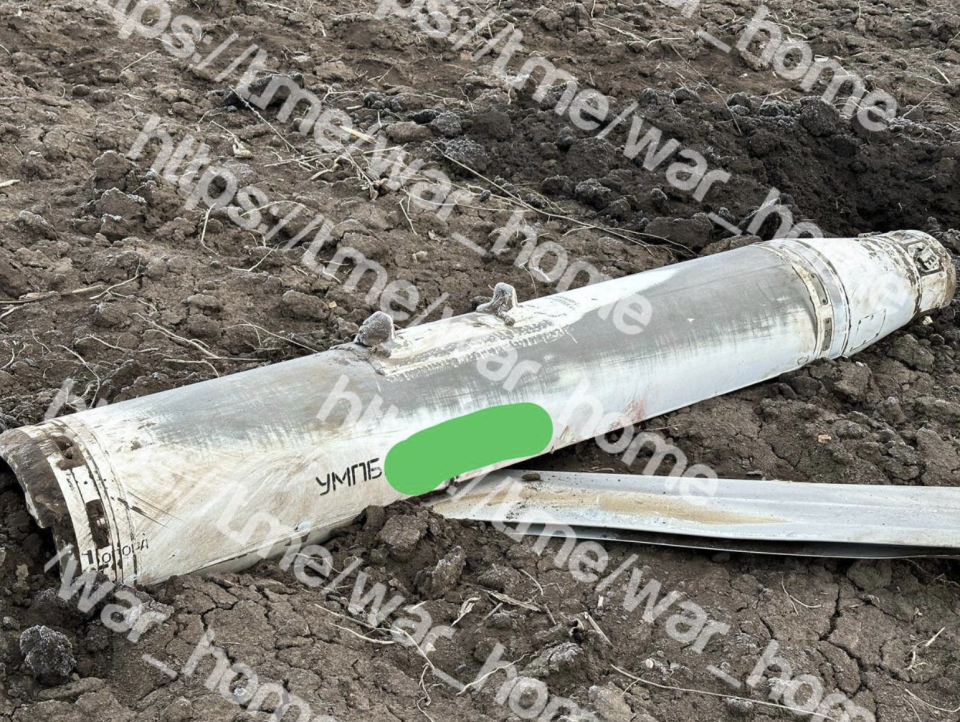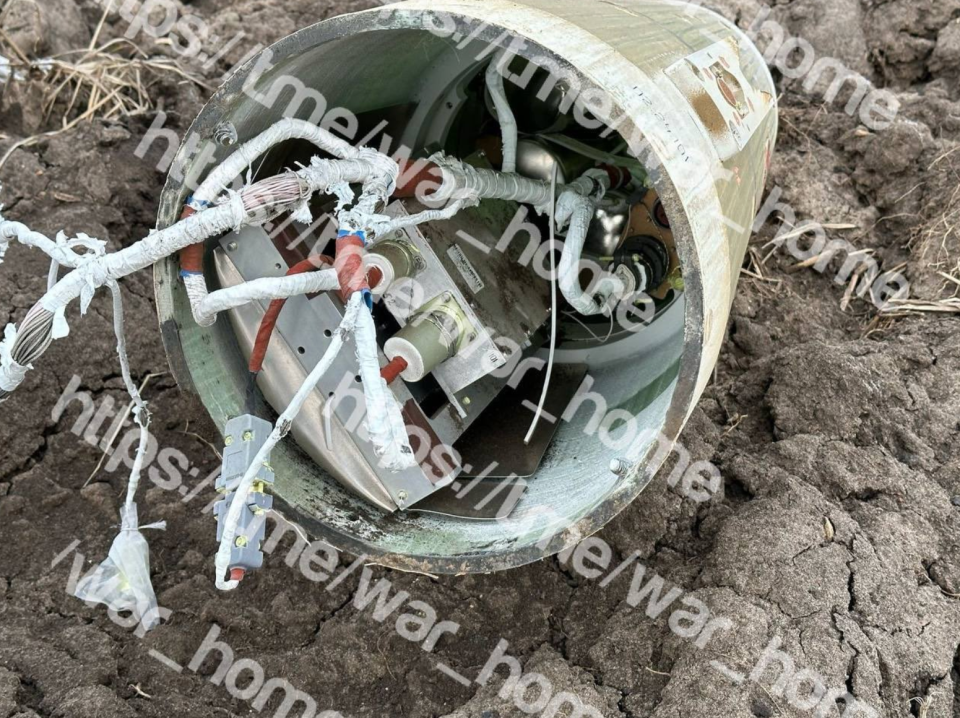Russia's Small Diameter Bomb-Like Weapon Seen In Action For The First Time

A little over two months after the first appearance of the wreckage of a new type of Russian glide bomb in the war in Ukraine, we now have imagery showing the complete weapon, including video of examples being launched. It appears that the standoff weapon is now better established in Russian service, which will pose additional problems for the hard-pressed Ukrainian air defense operators.
The new imagery of the UMPB D-30SN winged precision-guided bomb includes photos showing two examples under the wing of a Russian Aerospace Forces (VKS) Su-34 Fullback strike aircraft. While the Su-34 is a notably big aircraft, the relatively diminutive size of the bomb is very obvious.
When mounted on the aircraft, the off-white-painted UMPB D-30SN has its cruciform tailfins deployed, but the main wing is folded to lie flush with the bomb’s streamlined body. While the wing is mounted on the top of the weapon, the bomb itself is attached inverted to the aircraft. Like earlier Russian glide bombs, the weapon topples over after launch, ensuring that it’s the right way up.
A video shows the view from the cockpit of a Su-34 as it launches two UMPB D-30SNs. The wings can be seen popping out relatively soon after launch. Both the video and photos were first published by a Russian military blogger on the Telegram messaging app.
https://www.twitter.com/Archer83Able/status/1793488196396859433
The overall appearance is of a weapon that is much more refined than the previous UMPK, a fairly crude type of weapon that nonetheless has caused considerable difficulties for Ukrainian air defenses since its introduction in around early 2023. As we postulated when the new weapon first appeared:
“While the UMPK consists of a wing kit and precision guidance package that’s essentially bolted onto one of several different freefall bombs, the UMPB appears to have a slicker, far more elegantly integrated design.”
Back then, we also noted that the new weapon appeared to be something of an analog to the U.S.-made GBU-39 Small Diameter Bomb and, on a superficial level at least, this also appears to hold true.

What is not apparent in the new imagery of the UMPB D-30SN is any sign of a powerplant, which would provide a significant improvement in range. In the past, there had been rumors that the weapon might have a powerplant, specifically a small turbojet engine mounted below the body. While this remains a possibility, as an option, there is no evidence of a propulsion system at this stage.
Other rumors when the winged precision-guided bomb first appeared suggested that it might be a dual-use weapon, intended not only for launch from aircraft but also from ground-based rocket artillery. Again, there is no evidence so far of that being the case. However, the concept is certainly feasible.




Unconfirmed reports suggest that the UMPB D-30SN uses both inertial and satellite navigation. However, the exact guidance method used is unknown, so it’s unclear if the weapon can be programmed with a target’s coordinates after the aircraft has taken off, which would be required for the most time-sensitive targets.
Also important, an inertial navigation system should provide the weapon with a significant degree of resistance to electronic warfare jamming of the kind that is now increasingly being employed by Ukraine. Still, without GPS data to correct for drift, INS has accuracy limitations that get more pronounced the longer the weapon travels.
Meanwhile, it’s very evident that Russia has an almost insatiable demand for standoff weapons that can give its tactical aircraft improved chances of survival against Ukrainian ground-based air defenses. This month alone, the Ukrainian Ministry of Defense has claimed the destruction of five Russian Su-25 Frogfoot attack aircraft. While that cannot be independently verified, Ukrainian skies clearly pose a high level of risk to VKS tactical aircraft, highlighting the need for weapons that can strike targets surgically at and well behind the front lines.
https://www.twitter.com/DefenceU/status/1793679432550367234
At the same time, the development of the UMPK and now the UMPB D-30SN stress lower-cost solutions to this problem, when compared with tactical air-to-ground missiles, not to mention cruise and ballistic missiles. All these other weapons options are also likely in short supply, a combination of much heavier than anticipated airstrikes across a long campaign, as well as Russia’s limited ability to manufacture high-technology weapons without access to Western components in the required numbers.
The addition of the UMPB D-30SN to the Russian armory will be a concern for Ukraine, especially as it awaits new Western-supplied air defense systems.
Even the far cruder UMPKs have been described by Ukrainian officials as “almost impossible to shoot down.”

So far, we don’t know what their assessment of the UMPB D-30SN is, but, as we assessed in the past, the weapon is sure to address the various shortcomings inherent in the hastily fielded UMPK.
As Russia attempts to widen its campaign, while also better addressing the threat from Ukraine’s ever-evolving anti-aircraft defenses, we are likely to see more of the UMPB D-30SN, as a more accurate — and probably longer-ranged complement — to the larger and heavier-hitting UMPK.
With this weapon giving Russian aircraft another (apparently relatively low-cost) means of launching indirect attacks on Ukrainian targets, including the cities that have been repeatedly targeted, Kyiv’s need for additional and more advanced air defense systems to try and counter the threat will also only grow.
Contact the author: [email protected]